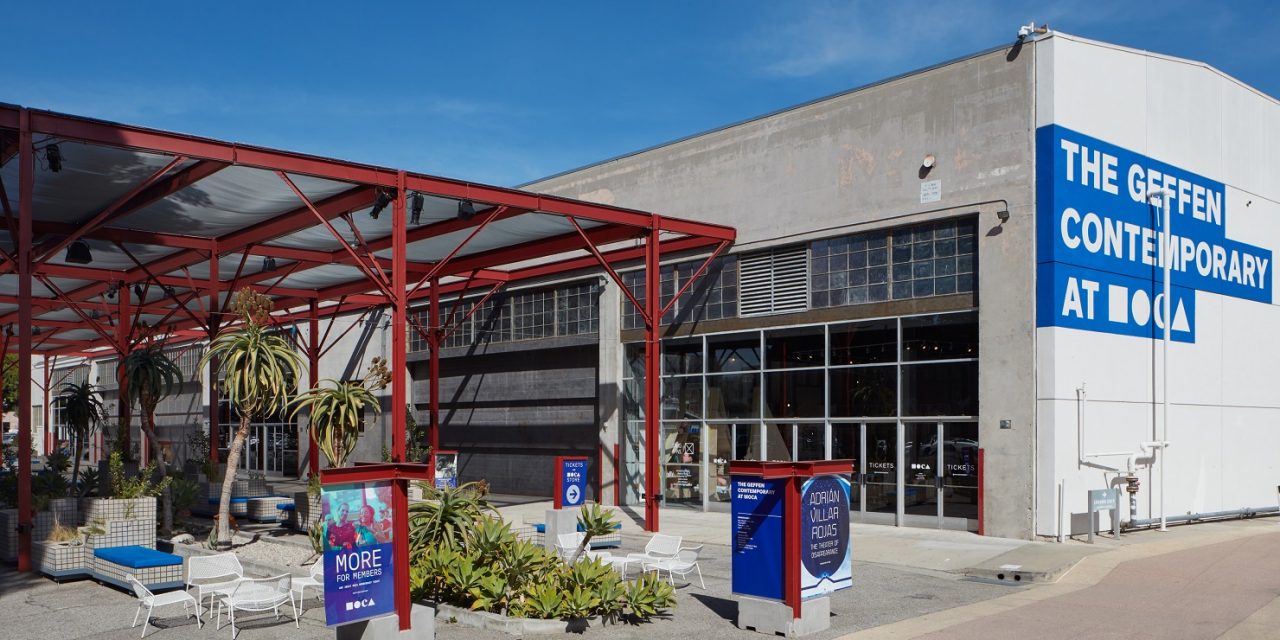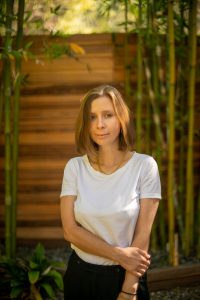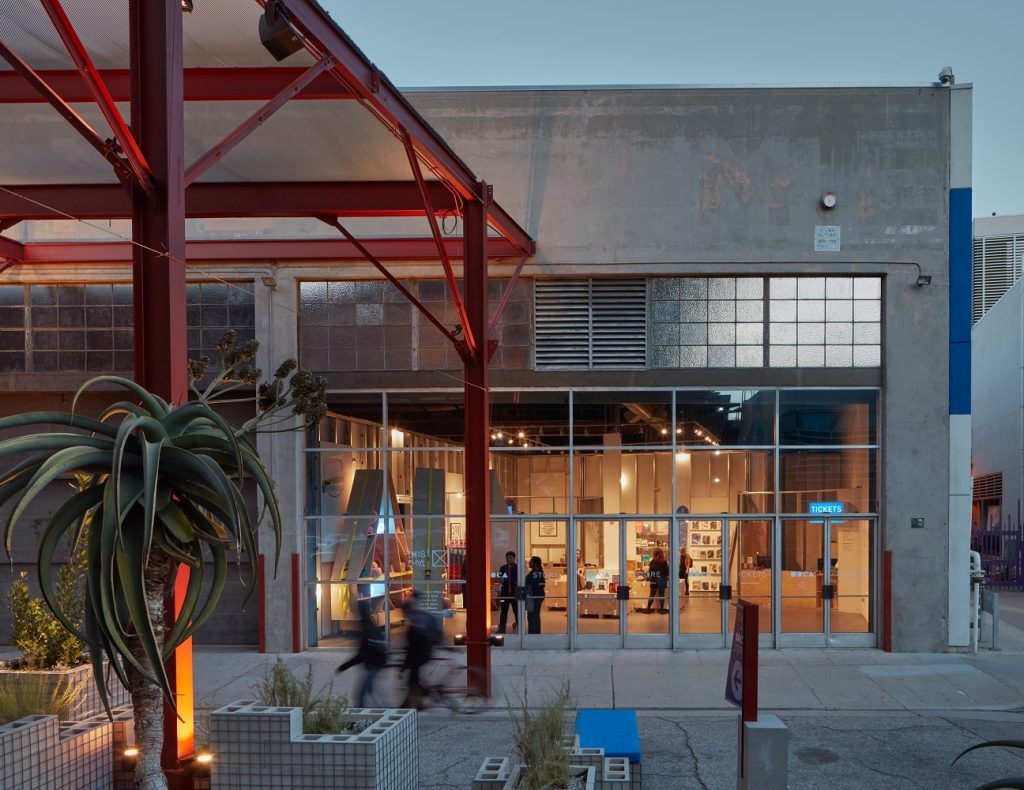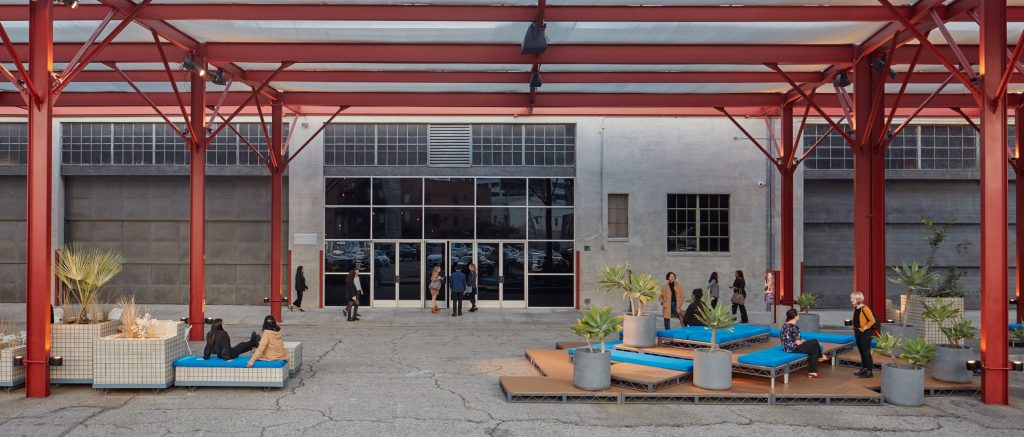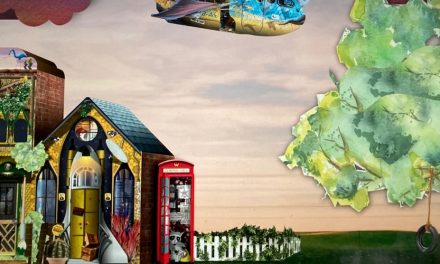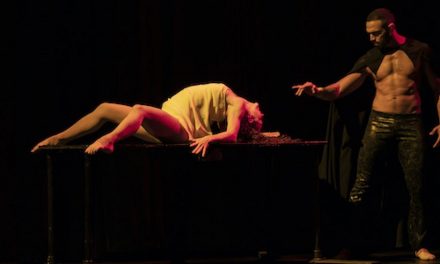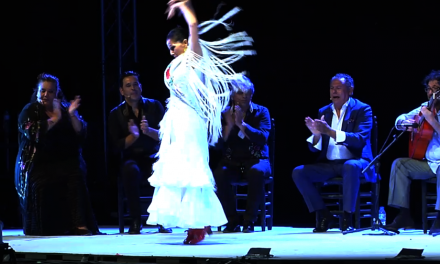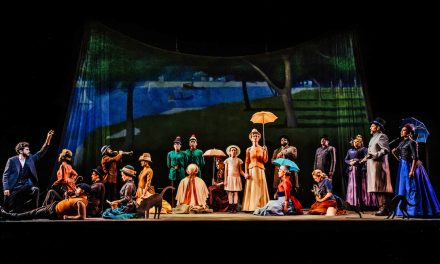In mid-August, 2021, Pieter Performance Space sent out an email sharing an invitation on behalf of Alex Sloane, Associate Curator of Performance and Programs at Museum of Contemporary Art (MOCA) to contact the Los Angeles dance community. Sloane said that she was willing to speak to smaller groups, or via email/zoom if preferred. It struck me as a positive sign that Sloane was reaching out to LA artists rather than bringing performers from New York or elsewhere. I therefore contacted Sloane and asked for an interview. At the time there was a controversy swirling around the announcement of the new Director of MOCA Johanna Burton, but fortunately I was directed to Communications Director Eva Seta who quickly arranged for a time for me to interview Sloane on Zoom.
Sloane relocated to New York from London to attend Parsons School of Design. She had gone to school in Paris to study painting and drawing. Once in New York, however, she became interested in performing. When I asked her to explain, Sloane expressed what she did as “working with my own body.”
Following graduation, she and other friends and artists received a grant from the Franklin Furnace Archives to open their own space. Among the many artists they worked with were Genesis Breyer P. Orridge and Raúl de Nieves. The space was called 1 : 1, and together these artists created their works and performed experimental works.
“We had these amazing dinners,” Sloane said. “We called them performative dinners.” She explained that people shared their poetry or got up onto the dinner table and performed. Sloane enjoyed choreographing those experiences onto her own body. She also discovered that she enjoyed programing these events at 1 – 1.
“That was where I really wanted to do programing as opposed to making my own art.” Sloane said.
She contacted the Museum of Modern Art (MoMA) in New York City and soon had a fellowship at one of the largest art institutions in the United States dedicated solely to contemporary art, MoMA PS1 where she worked in different capacities until 2020. Founded in 1971 by Alanna Heiss, the history of PS1 would take an entire separate article. You can read more about it HERE.
One of her jobs at MoMA PS1 was to curate performances that took place in a geodesic dome located in their courtyard. She created what was called Sunday Sessions that encapsulated dance, performance, music, comedy, theater, modular installations, talks, etc. Sloane called it a sort of cocktail of live arts. Her boss at the time Jenny Schlenzka went on to be the Executive Artistic Director at Performance Space New York, so she took over as Director of programing at PS1.
“One of the things that I used to push was commissions and residencies for the museum to be a funding and creation of new work,” Sloane said. “Not just for the presentation of existing work.” Although she thinks that life performances are “phenomenal,” like many artists I have met, Sloane finds the process of creating a new work as interesting as the final product. “I think that supporting LA artists throughout the process is what museums can do.” She added.
Sloane had worked with Klaus Beisenbach a German curator who had been serving as the director of MOCA in Los Angeles since 2018. He was a former Chief Curator at Large at MoMA in New York City and former director of MoMA PS1. Beisenbach will soon take over as director of Berlin’s Neue Nationalgalerie and the future Museum of the 20th Century. It was he who offered Sloane the position of Associate Curator of Performance and Programs at MOCA. After twelve years in New York, she accepted. She was scheduled to take on her duties at MOCA last year, but Covid intervened.
Since moving to Los Angeles Sloane has primarily been meeting with artists. Earlier this summer she organized a program with Dean of the Dance School at CalArts Dimitri Chamblas, and musician/songwriter/visual artist Kim Gordon.
“I feel like this is my mission to absorb and not talk, to listen, to see what’s missing and where I, by extension, can be most value within the community, and as an institutional figurehead to really advocate,” she expressed.
We talked briefly about the history of dance in LA and the lack of media coverage. Sloane said that she is excited that people are beginning come out more and, like so many of us, she is looking forward to attending live performances again. Zoom has been great to keep connections going, but everyone has had their fill of watching performances on a small screen. Over that weekend she was scheduled to go to REDCAT to see jumatatu m. poe & Jermone Donte Beacham: Let ’im Move You: This Is a Formation, and Blondell Cummings: Dance As Moving Pictures at Art + Practice.
Sloane has also been having lengthy conversations with choreographer postmodern dancer, choreographer, artist and writer Simone Forti because she and others will be taking over the organization of Forti’s installations at MOCA, previously headed by Amanda Hunt.
When I asked her how she was reaching out to the dance community, Sloane said that she was scheduling studio visits and organizing meetings with small groups of ten. She mentioned that she had met dance artist Jay Carlon who does a lot of site-specific work. Sloane is not ruling out working with anyone. Right now, she is looking around at who is here, talking to people and listening to them so that she can figure out what is appropriate for the space at Geffen Contemporary at MOCA.
I have only been to one performance at this space. The Geffen is huge. Two-thirds of it is gallery space, and the remainder is what Sloane has to work with. That too is large (14,000 sq. feet) with a concrete floor, 43 foot high ceiling, two rows of large pillars running down the middle and no windows. My experience was that when bare, it feels like a subway station platform; with the right funding, artists could turn it into anything that pops into their imagination. The possibilities are endless, but a proscenium theater it is not, and Sloane is interested in collaborating with artists who are willing to explore its potentials.
Sloane sees nothing but potential with the space and indeed it is part of the reason she agreed to take on this job. “It has a big roll up gate that opens directly onto the plaza, which is an area where we can also do outdoor programing.”
When asked if she knew what percentage of her programing would be dedicated to dance, Sloane said that it was possibly high.
“If you look at my previous programing,” Sloane said. “I would say that you would see dance, although it does encompass a range of other types of programing as well. The Geffen lends itself to experimental sound due to the architecture, but I hope that it becomes something that it becomes synonymous with dance.”
Sloane said that there were some structural upgrades that had to be completed at the Geffen, but she hoped that performances would begin as soon as possible. “I’m here now,” she said. “I was doing programing outside over the summer on the plaza that included performances by Jazz musician Charles Gaines, and one by Dimitri Chamblas and Kim Gordon.”
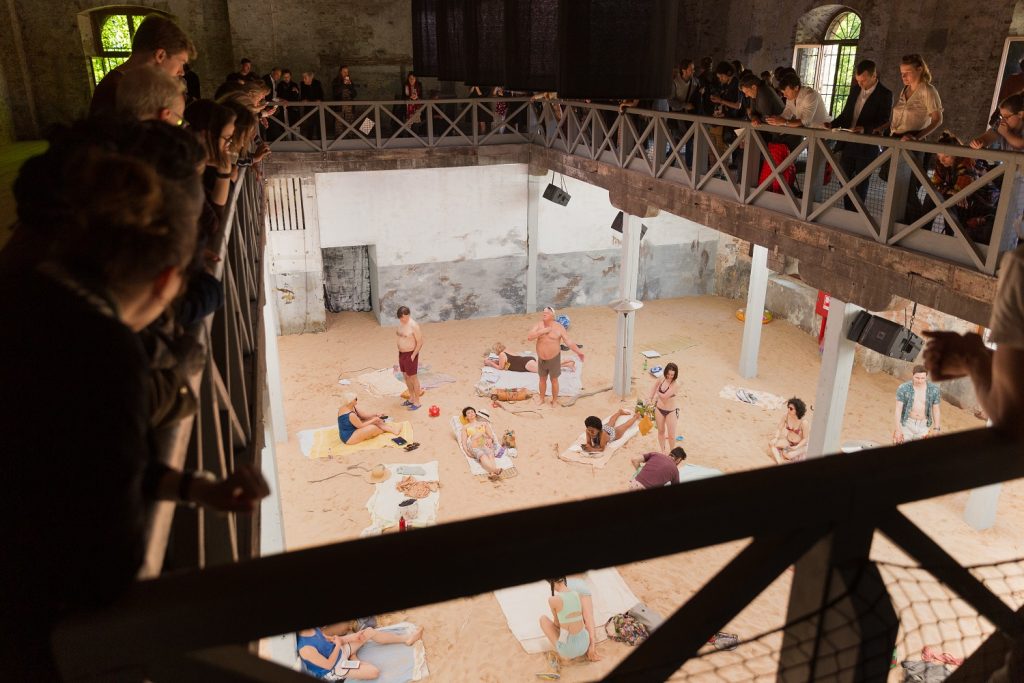
Sun & Sea Marina opera performed by Rugile Barzdziukaite, Vaiva Grainyte, and Lina Lapelyte at Biennale Arte 2019 Venice – Photo by Andrej Vasilenko © courtesy of the artists. – Alex Sloane curated the Los Angeles stop of the show.
We discussed the previous scheduling of performances at MOCA and Sloane said that she hoped to have them occur on a more regular basis. “My hope is that there can be a beat whether it is in the form of residencies or in the form of open studios” she said. Because there have been so many studios in LA that have been forced to close due to the pandemic, Sloane has been in discussion with others at MOCA about how, in addition to regular presentations, it would be to have regular residences there so that artists would have a space to work in.
I led Sloane into a discussion about previous programing at MoMA PS1 and what she had learned regarding future performances. She admitted that there were events that were not successful, but that although she might not repeat those specific projects, she in no way regrets having tried and would try again. “I don’t regret the attempt at all,” she said. “I love talking with artists” Sloane added, “and hearing about everything that they want to try and do. It is my job to make something that can happen in the museum context given the bureaucracy, given the financial limitations, and given the resource limitations. How do you take the idea and realize it in a way that still achieves what the artist was originally looking for?”
Sloane mentioned that when it comes to commissioned work for the Geffen and because she knows the space better than an artist who is coming in for the first time, that it is her responsibility to collaborate with them to hone or slightly alter their idea so that their project will work better in the space.
I brought up the subject of when performances take place in museums, galleries and other non-traditional space, visibility is a prominent concern. Even as a tall person, I often have trouble seeing the performers because everything is usually on one level and due to other audience members standing in front of me. I asked if she kept this in mind when programing performances at MOCA PS1 or at MOCA Geffen. Sloane confessed that it was a also problem for her due to her height and that she was constantly experimenting with different configurations of cushions on the floor, combinations of chairs and pillows, and even different positioning of risers. Of course, the Covid safety regulations now present even more restrictions for where and how far apart audience members are positioned.
“It’s great to be here” Sloane said as we ended the interview, “and it’s great to be able to meet more people. “Nothing happens overnight, especially with Covid, but it is exciting to actively be talking about what is possible.” She hopes that MOCA Geffen will become synonymous with what LA artists are making.
To visit the MOCA website, click HERE.
To find out more about MOCA Geffen, click HERE.
Written by Jeff Slayton for LA Dance Chronicle.
Featured image: The Geffen Contemporary at MOCA – Photo by Elon Schoenholz

